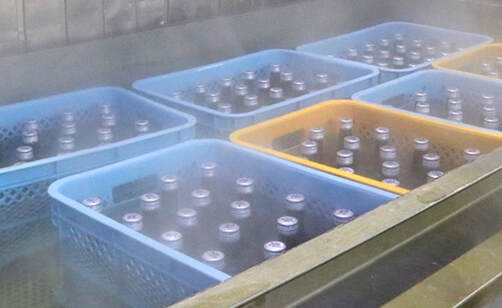|
Sake was not the first alcoholic beverage made in Japan during the Jomon period, as earthenware vessels containing wild mountain grape wine were discovered in Nagano Prefecture in 1958.
Later, in the Yayoi period, rice cultivation was introduced and "mouth-chewing sake," the precursor to modern-day sake, was developed. Evidence of sake consumption in connection with religion is noted in the 3rd century book from China, 'Gishiwajinden 魏志倭人伝.' The cultivation of rice in Yayoi Period (from 300BC to 300AC) is believed to have spurred the production of alcohol beverages. |
|
The production of sake in Yayoi Period was described in the Japanese book called "Osumikoku Fudoki 大隅国風土記" written in the early 7th century, which detailed natural features, climate, and products in Kagoshima prefecture.
The book describes a primitive method of sake production, where unmarried girls would chew rice and spit it into a pot. This method, known as 'Kuchikami-no-sake' (口噛みの酒), utilized the enzymes Amylase and Diastase found in saliva to break down the starch in the rice, converting it into sugar and allowing natural yeast fermentation to occur. |
Sake in the movie - 'YOUR NAME (原題:君の名は)' |
|
During the Kofun period and Asuka poeriod, sake was produced mainly for religious purposes with no established techniques.The type of sake consumed during this period are known as Doburoku, unrefined sake that is cloudy and has a sweet taste due to the high sugar content.
In the Nara period, it is also believed that the method of adding a mold called Koji to the rice to facilitate fermentation was developed during this period. |
|
the edo period |
In Japan's Heian period (794-1185), significant advancements were made in sake production. Buddhist monks brewed "Soubo-shu"(僧坊酒) sake in temples, giving it its name, which means "monk's quarters" in Japanese. Meanwhile, a more refined and smoother-tasting sake called "Morohaku"(諸白) was developed using polished rice. The polishing process removed impurities and unwanted flavors from the rice grain, resulting in a higher-quality sake that became popular among the upper classes.
During the Kamakura period (1185-1333), sake production expanded to rural areas. The habit of drinking sake became a social issue promotiong the government to established a prohibition of the sake in 1252 |

|
During and after World War II, Japan faced a shortage of rice, which resulted in the rationing of sake rice. As a consequence, the production of sake decreased, leading to the widespread production of illegally brewed sake made from methyl or fuel alcohol. These conditions led to Japanese government to tackle the issues by implementing the law of 'Sanbai zojo shu 三倍増醸酒' method. This method involved using brewer's alcohol to increase the yield of sake and adding sugars, acidulants, and other additives to enhance its sweetness and umami flavor.
|
